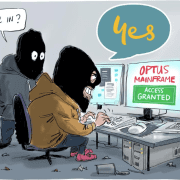Social Media Pushing For Crisis Management Change
Within one minute of a Boeing 777 crash-landing at San Francisco International Airport in 2013, it was on Twitter with a photo from an eye-witness observer. Within 30 minutes the number had risen to more than 44,000 tweets with photos and videos taken by survivors.
The wave of social media coverage illustrated three phenomena which have vastly complicated the challenge facing communication professionals in the aftermath of an incident.
Firstly, the sheer number of people actively using social media platforms each month is now passed the two billion mark; potential “citizen journalists” or 28% of the world’s population.
The second is mobility: more than half of all internet access globally is via mobile devices, such as smart phones, tablets, and notebook computers.
Thirdly, the impetus to interact more with communities (stakeholders) through social media directly derives from dissatisfaction with traditional media.
More than half the planet now owns a mobile phone, with unique users now exceeding 3.6 billion. Globally active mobile subscriptions now exceed 7.1 billion, suggesting that the average phone owner maintains almost 2 active subscriptions.
If an incident occurs in a populated area, or at a highly visible location, eyewitnesses or participants can now capture and share images of the event, upload videos or post comments via their mobile devices before any organisation, or government department concerned may even be fully aware of what has happened.
Once the story breaks on social media, the opportunity to provide factual information and influence the developing narrative is reduced to minutes.
However, social media channels, such as Twitter and Facebook, provide organisations with an equal opportunity to reach the news media and other audiences quickly and to provide constantly updated information in an emergency.
Effectively harnessing the power of social media should be a top priority for all organisations and, therefore be an integral part of any organisation’s plans to respond to an accident or major incident. It goes without saying, that the time to prepare for an accident or serious incident is before it occurs, and these preparations should be exercised on a routine basis.
RMK+Associates has the background, experience and front-line history to help governments and organisations with their crisis management plans and responses to ensure they are fully prepared for, and capable of responding to any incident.













Leave a Reply
Want to join the discussion?Feel free to contribute!